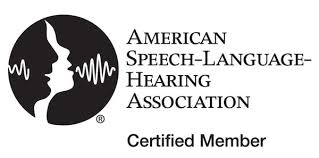
To use in your report, highlight text first then:
COPY
WINDOWS: Ctrl + C
MAC: Command + C
PASTE with no Formatting
WINDOWS: Ctrl + Shift + V
MAC: Shift + Option + Command + V
PASTE with Formatting
WINDOWS: Ctrl + V
MAC: Command + V
**Use for templates with tables**
Phonological Awareness Test-2
The Phonological Awareness Test-2 by Carolyn Robertson and Wanda Salter (2007) is an individually-administered test designed to diagnose deficits in phonological processing and phoneme-grapheme correspondence. The test is comprehensive in that it includes a wide variety of tasks; performances on each of these tasks has been correlated with success in early reading and spelling. Rhyming, segmentation, isolation, deletion, substitution, and blending subtest are included in the Phonological Awareness section of the test. Graphemes and decoding subtests are included in the Phoneme-Grapheme section of the test. An optional subtest, Invented Spelling has also been included to diagnose spelling deficits. Tasks are generally arranged in a developmental sequence. An explanation of each task is presented below.
PHONOLOGICAL AWARENESS SUBTESTS
RHYMING SUBTEST:
Discrimination- measures the student’s ability to identify rhyming words presented in pairs.
Production- assesses the student’s ability to provide a rhyming word when given a stimulus word.
SEGMENTATION SUBTEST:
Sentences-measure the student’s ability to divide a sentence into the number of words in that sentence.
Syllables- measures the student’s ability to divide words into syllables.
Phonemes- measures the student’s ability to segment words by phoneme or sound.
ISOLATION SUBTEST:
Initial-measures the student’s ability to identify the initial phoneme in a word.
Final-measures the student’s ability to identify the final phoneme in a word.
Medial-measures the student’s ability to identify the medial phoneme in a word.
DELETION SUBTEST:
Compounds and Syllables- measures the student’s ability to say a word and then say it again, deleting one root words or syllable.
Phonemes-measures the student’s ability to say a word and then say it again, deleting one of its phonemes or sounds.
SUBSTITUTION SUBTEST:
With Manipulative-Using colored blocks to represent phonemes, the student isolates a phoneme or sound in a word, then changes it to another phoneme to form a new word.
BLENDING SUBTEST:
Syllables- assesses the student’s ability to blend syllables together to form a word when the syllables are presented individually.
Phonemes- assesses the student’s ability to blend phonemes together to form a word when the phonemes are presented individually.
PHONEME-GRAPHEME SUBTESTS
GRAPHEME SUBTEST:
These tasks assess the student’s knowledge of sound/symbol correspondence. Given a printed letter(s), the student says the sounds that letter(s) represents in the following areas: Consonants, Long & Short Vowels, Consonant Blends, Consonant Digraphs, R-Controlled Vowels, Vowel Digraphs, Diphthongs.
DECODING SUBTEST:
These tasks measure the student’s ability to blend sounds into nonsense words, putting into practice general sound/symbol correspondences, Given printed nonsense words, the student produces words in the following areas: VC Words, CVC Words, Consonant Digraphs, Consonant Blends, Vowel Digraphs, R-Controlled Vowels, CVCe Words, Diphthongs.
This test states research has shown that approximately 20-25% of students have difficulty making the connection between sounds (phonemes) and letters (graphemes) without specific interventions. Therefore, any student who receives a score at or below the 25th percentile may be candidates for specific intervention.
Areas where XX received a score at or below the 25th percentile and need to be addressed in therapy:





